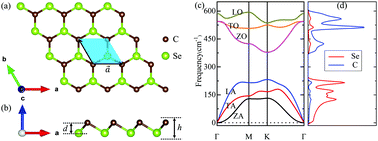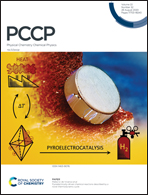Thermal transport properties of novel two-dimensional CSe†
Abstract
Recently, as a novel member of the IV–VI group compounds, two-dimensional (2D) buckled monolayer CSe has been discovered for use in high-performance light-emitting devices (Q. Zhang, Y. Feng, X. Chen, W. Zhang, L. Wu and Y. Wang, Nanomaterials, 2019, 9, 598). However, to date, the heat transport properties of this novel CSe is still lacking, which would hinder its potential application in electronic devices and thermoelectric materials that can generate electricity from waste heat. Here we systematically study the heat transport properties of monolayer CSe based on ab initio calculations and phonon Boltzmann transport theory. We find that the lattice thermal conductivity κlat of monolayer CSe is around 42 W m−1 K−1 at room temperature, which is much lower than those of black phosphorene, buckled phosphorene, MoS2, and buckled arsenene. Moreover, the longitudinal acoustic phonon mode contributes the most to the κlat, which is much larger than those of the out-of-plane phonon mode and transverse acoustic branches. The calculated size-dependent κlat shows that the sample size can significantly reduce the κlat of monolayer CSe and can persist up to 10 μm. These discoveries provide new insight into the size-dependent thermal transport in nanomaterials and guide the design of CSe-based low-dimensional quantum devices, such as thermoelectric devices.

- This article is part of the themed collection: 2020 PCCP HOT Articles


 Please wait while we load your content...
Please wait while we load your content...